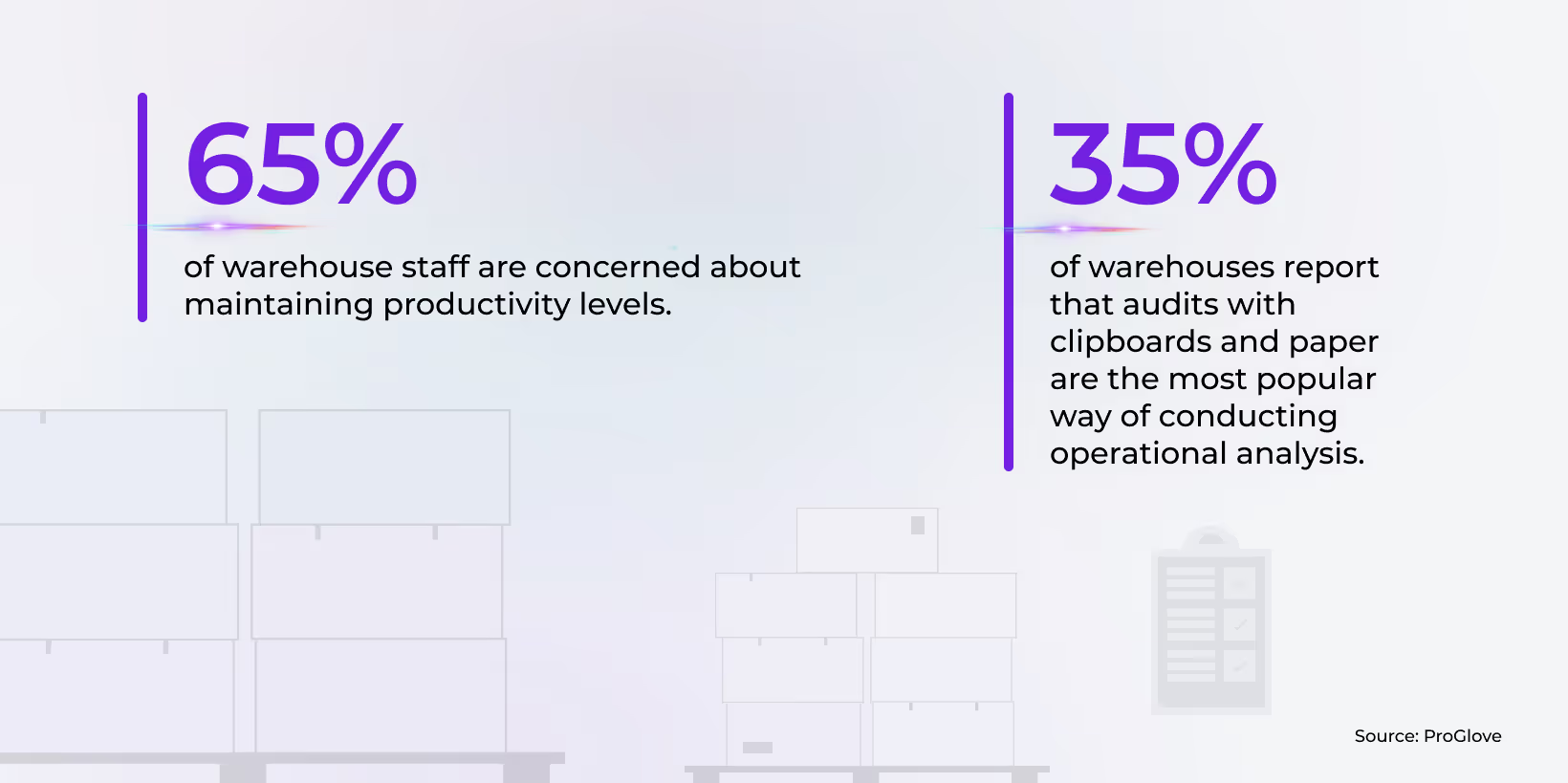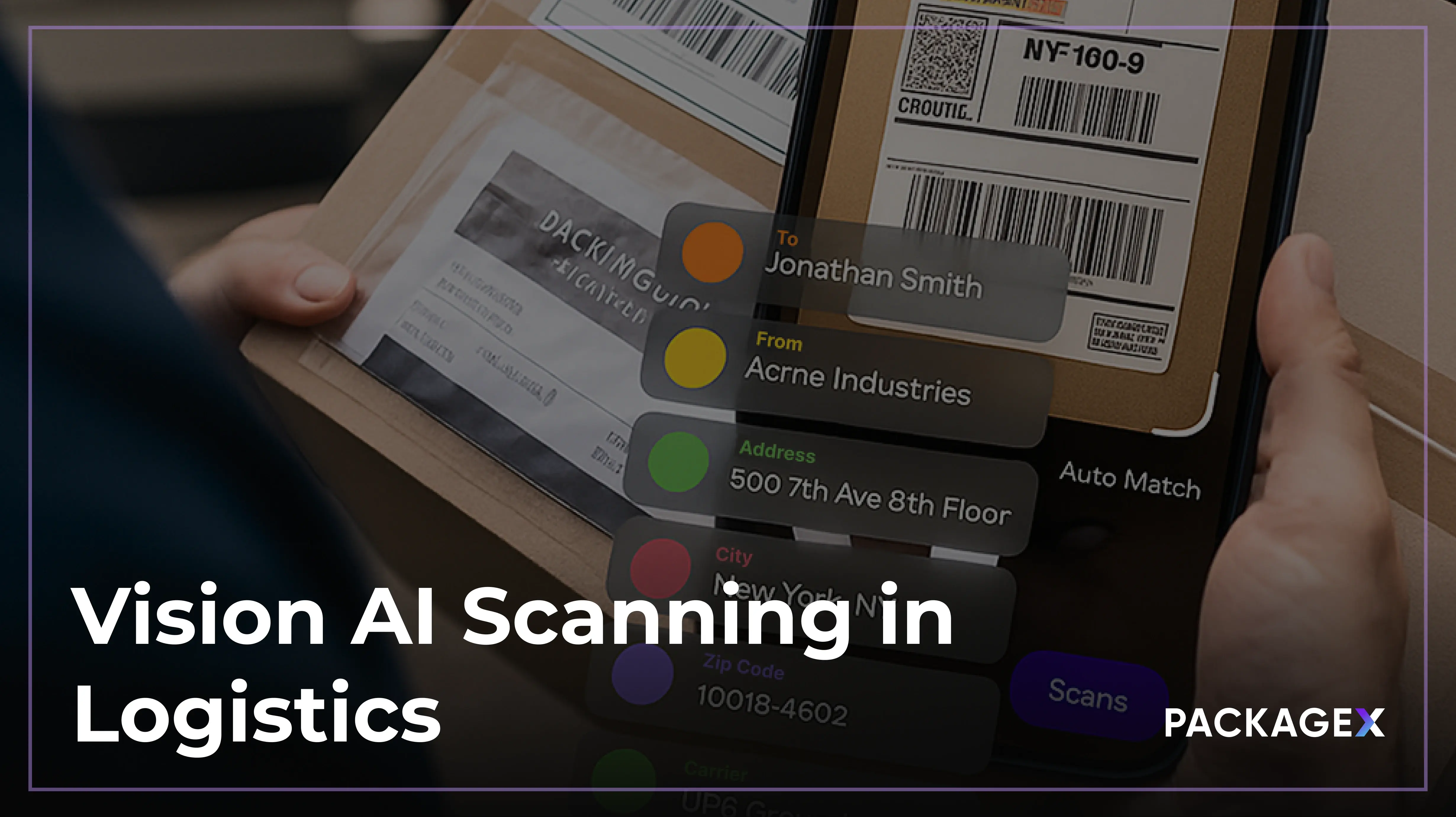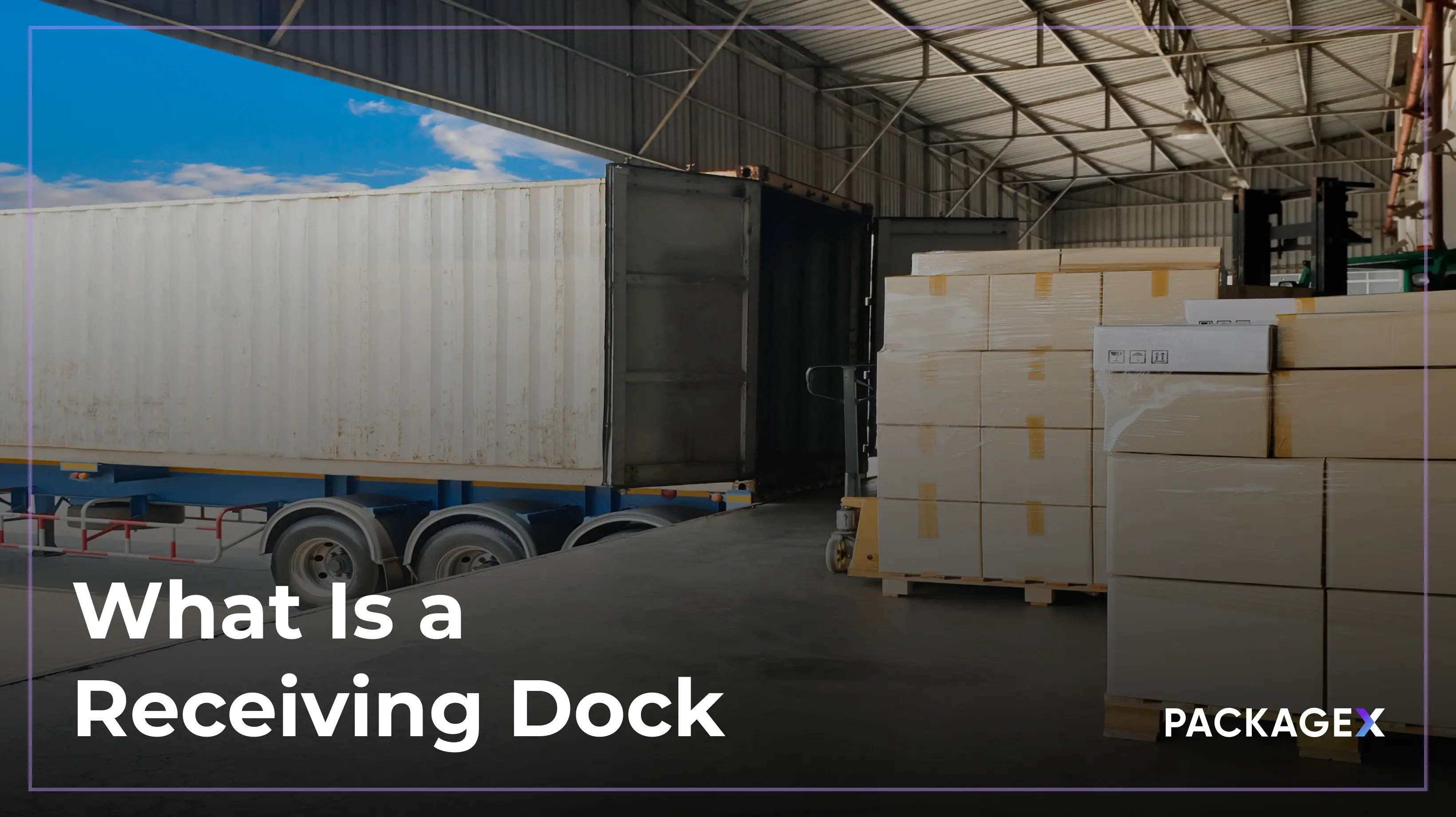Ask anyone in warehouse management about some of the common challenges they face daily, and they’ll likely launch into a diatribe about delays, errors, mistakes, discrepancies, overcapacity, undercapacity, or some combination of all of the above. Left unchecked, these issues can quickly cascade downstream and lead to inventory figures that are wildly inaccurate. Today, only 77% of warehouse workers trust the data they receive, and 65% think productivity is a concern.

The fact is, running a warehouse is complex and full of trade-offs. Across receiving, putaway, storage, picking, packing, and shipping, companies need to find the right balance between speed, cost, and maximizing storage and resource utilization to optimize their operations.
That’s why accurate, real-time data is so important. Without clear visibility into warehouse operations, organizations spend more time and energy fixing problems rather than delighting customers and adding value to the business.
This article will explore how companies can eliminate manual processes and use automation for data capture on the warehouse floor. This is the second article of our Automation Opportunities series, highlighting innovative solutions to streamline logistics operations for better efficiency.
The Current State of Warehouse Operations
Inaccurate, opaque, and error-prone are just a few of the words used to describe manual data entry across warehouse operations. The challenges are immense, with issues that can quickly ripple across warehouse processes, resulting in inventory discrepancies and lost sales. Some of the most common examples of manual tasks include:
- Recording incoming shipments by hand on paper forms or using spreadsheets.
- Using basic barcode scanners not integrated with other systems.
- Manually entering shipment details into inventory management software.
- Manually inspecting items against purchase orders.
- Documenting discrepancies or damages on paper forms.
- Manually inputting inspection data.
- Recording storage locations by hand or in non-integrated spreadsheets.
- Updating inventory locations manually.
- Using paper-based order forms to manage picking lists.
- Managing packing processes manually.
- Creating shipping labels using simple spreadsheets or paper forms.
- Manually updating order status and shipment details.
A shocking 80% of warehouses today have no automation whatsoever, and only 5% use sophisticated automation equipment and solutions. Furthermore, many organizations have no plans to automate processes. According to research by McKinsey, 28% of companies do not plan to implement any new technology to improve operational efficiency.
Even companies implementing automation and advanced analytics have faced challenges with their systems. These include data scattered across different systems, perceived high investment costs, slow implementation and adoption, and steep learning curves. The point is that these companies need simple, smart, and connected solutions, and they’re turning to modern warehouse automation technologies to address their biggest pain points.
The Democratization of Best-In-Class Warehouse Automation Technologies
Over the last few years, there’s been a seismic shift in the accessibility and implementation of top-tier warehouse automation solutions. Advanced technologies that were once exclusive to large companies with big budgets can now be attained by nearly any business of any size, anywhere in the world.
More importantly, companies across various industries investing in automation reap huge benefits. According to research by Bain, automation leaders can drastically reduce costs via automated processes, freeing up staff to do higher-value work, speeding up processes, and improving customer experiences.

New tech innovations can have a transformative impact on operations. In fact, some of the cutting-edge warehouse tools that are making the biggest impact on efficiency and productivity include:
Optical Character Recognition (OCR) scanning technology
OCR scanning technology offers a solution to the problem of inaccurate and incomplete data during receiving and quantity verification. Traditional manual processes and basic barcode scanning often result in either illegible handwriting or incomplete information.
The best OCR technology can scan and recognize text, extract data, and integrate it seamlessly into other systems. By implementing OCR scanning for logistics documents such as packages, invoices, and Bills of Lading, warehouses can automate data capture and ensure accuracy and completeness.
{{returns-webinar}}
Computer vision (including damage detection AI)
Computer vision technology, which includes damage detection AI, addresses the issue of a lack of rich data during receiving and unloading processes. Barcode scanners fail to capture essential details such as sender/carrier information and item condition. To overcome this limitation, warehouses can leverage OCR, computer vision, and advanced algorithms like PackageX damage detection AI to enhance data quality and decision-making.
API integrations
API integrations provide a solution to the challenge of siloed data and internal integration issues across warehouse processes. Data fragmentation among systems like inventory management, warehouse management, and barcode scanners can slow or even halt operations. By implementing API integrations, warehouses can facilitate seamless data exchange between all systems, ensuring cohesive operations and maximizing the benefits of automation.
Pros and Cons of Automation in the Warehouse
While warehouse automation offers numerous benefits, it also comes with its own set of advantages and disadvantages.
Overall, while automation offers many benefits in terms of efficiency, accuracy, and cost savings, warehouses must carefully weigh the pros and cons before implementing automated solutions to ensure they align with their operational needs and long-term goals.
PackageX Receive and PackageX Inventory are powerful solutions that can help optimize warehouse operations and maximize efficiency. PackageX Receive features advanced OCR tech that allows users to use a smartphone or tablet to scan shipping labels, extract critical data, and automate storage, routing, and communication processes, resulting in 92% faster speeds compared to manual processes. PackageX Inventory takes inventory management to the next level, empowering businesses to automate processes like matching inbound shipments against manifests, managing items in the warehouse, and executing fulfillment.
PackageX Optimizes Warehouse Efficiency With Smart Data Capture
PackageX is revolutionizing warehouse operations by integrating intelligent data capture technologies that streamline inventory management and boost productivity. With features such as OCR label scanning, bill of lading data extraction, and damage detection AI, we’re eliminating manual data entry errors and enhancing accuracy for today’s modern businesses. As a result, warehouses experience significant cost savings, improved scalability, and a seamless integration of advanced data capture capabilities into their existing workflows.
If you want to learn more about how PackageX can help you improve your warehouse operations, we’d love to speak with you. Schedule a demo to experience how our modern platform can elevate your logistics systems today.




